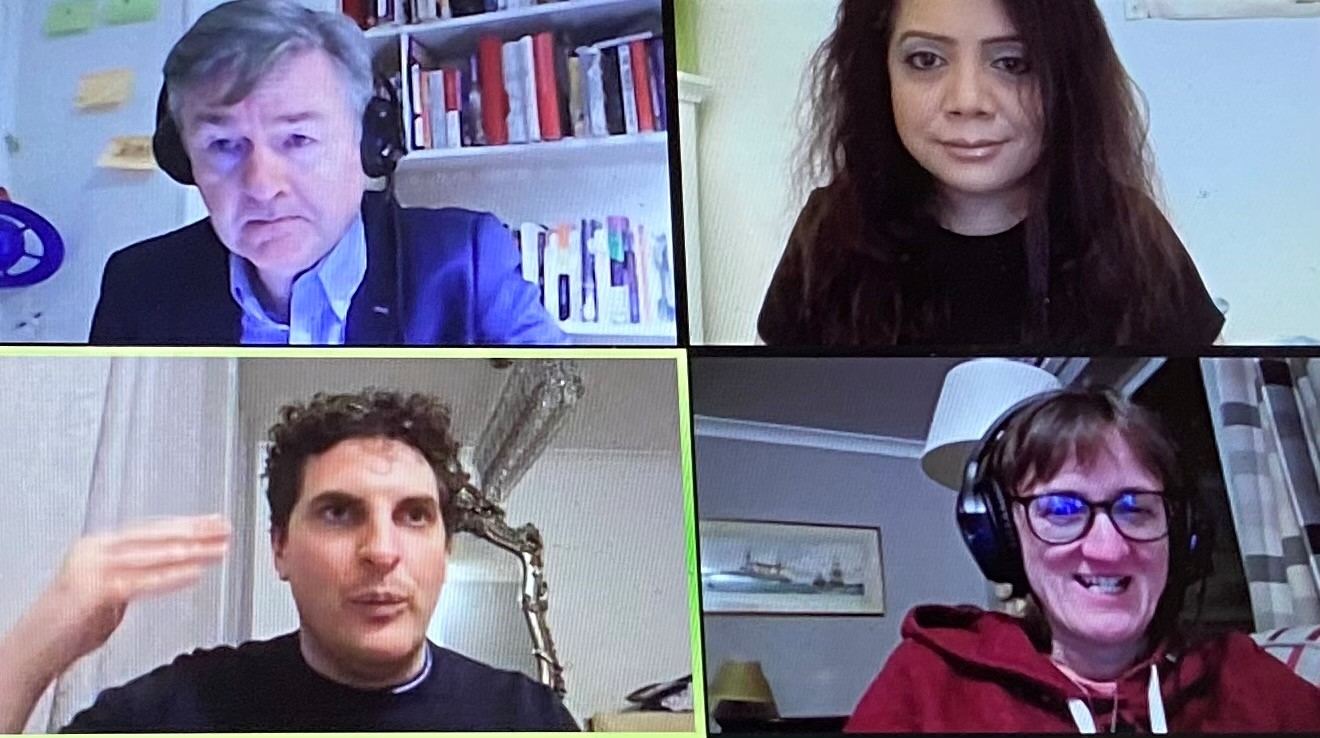
David Stenhouse, Roohi Hasan, Peter Smith and Susie Schofield, captured mid-session at the How to Pitch Masterclass
JST’s masterclass on 25th February was entitled, ‘How to pitch’. The interactive masterclass was led by JST mentor and ITV Senior Producer, Roohi Hasan, and past RTS ‘Young talent of the year’ winner and ITV Scotland Correspondent, Peter Smith, and chaired by David Stenhouse.
Both Roohi and Peter reiterated and explained how pitching in a story-led industry like journalism, is so important. They gave examples of the process they went through to pitching a story to their editors, noting that pitching a story can sometimes take time and a lot of back and forth, which doesn’t mean the idea is bad but an editor will always have questions. Questions about the story and what the hope to uncover in their programme/report is.
A stand-out moment during the masterclass was Roohi and Peter speaking about the importance of them bringing their expertise, personality and identity to a story they’ve pitched. Peter gave a recent example about changing the direction of a story about Scotland and lockdown based on what he was hearing on the ground from friends, online community and family. And Roohi, recently working on a Covid-19 BAME vaccine hesitancy report, was inspired by what she knew was going on in her community.
Roohi’s top 10 pitching tips:
- Research (basics) to deliver an informed pitch – think about the who, what, why and when.
- What is *new* or *different* about your take on this story? Is there a new line that will move the story on?
- Know your audience – is this story for digital, TV, audio? Oftentimes, a pitch will aim for TV and not make it because of a lot of factors like – the programming schedule. This is where it’s helpful to think, how can you target the other, also, important mediums?
- How are you going to pitch this – written one pager or spoken directly to an editor?
- How you write it – clear and simple! A statistic helps in introducing an idea/story.
- What’s your headline for this story – how would you summarise it in a line for your editor or a family member?
- How are you going to bring this story alive – e.g. contributor, graphics, statistic, expert voice?
- Anything to support your story – an ally in the newsroom is helpful in championing your idea/story, picture/footage.
- Timing – the earlier you pitch a story, the better. A lot happens in a newsroom which might delay or increase demand in other stories.
- Don’t give up! Whatever the outcome of your pitch, ask for feedback. This will help you going forward and going through the process again.
Peter’s pitching advice:
- Double-check your pitch that you plan on sending and have back up elements – again, anything can happen with a contributor pulling out at the last minute for example.
- Think about your story – if it’s fun, deliver your pitch in the same way. Excite your editor and team!
- Your pitch must take us through a journey – 1) asking a question, and 2) answering the question at the end.
- Use superlatives in your pitch – this brings the story/idea alive.
- Think about your headline – give a clear idea that’s simple and easy to understand. The simpler, the better as you’re able to bring the elements together to illustrate the story.
 After Roohi and Peter gave tips on how to pitch, they went through four pitches which were emailed in by current JST mentees. They both provided the journalists with advice and ideas on how to improve their pitch with the help of other mentees, too!
After Roohi and Peter gave tips on how to pitch, they went through four pitches which were emailed in by current JST mentees. They both provided the journalists with advice and ideas on how to improve their pitch with the help of other mentees, too!
Rosetta Fourlagawo @RFourlagawo (pictured) is a researcher at Sky News. Rosetta was a JST mentee on our 2019-20 scheme
